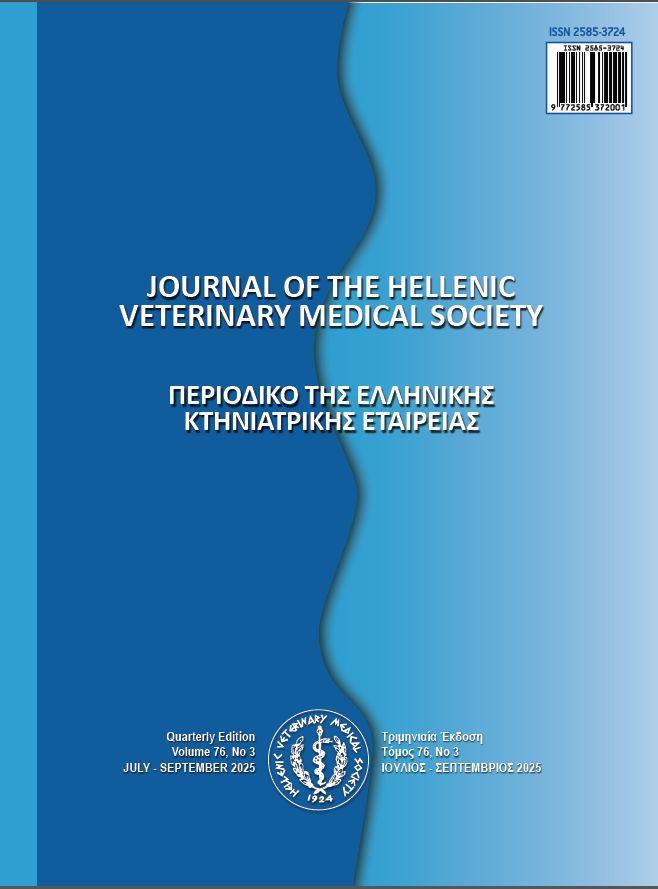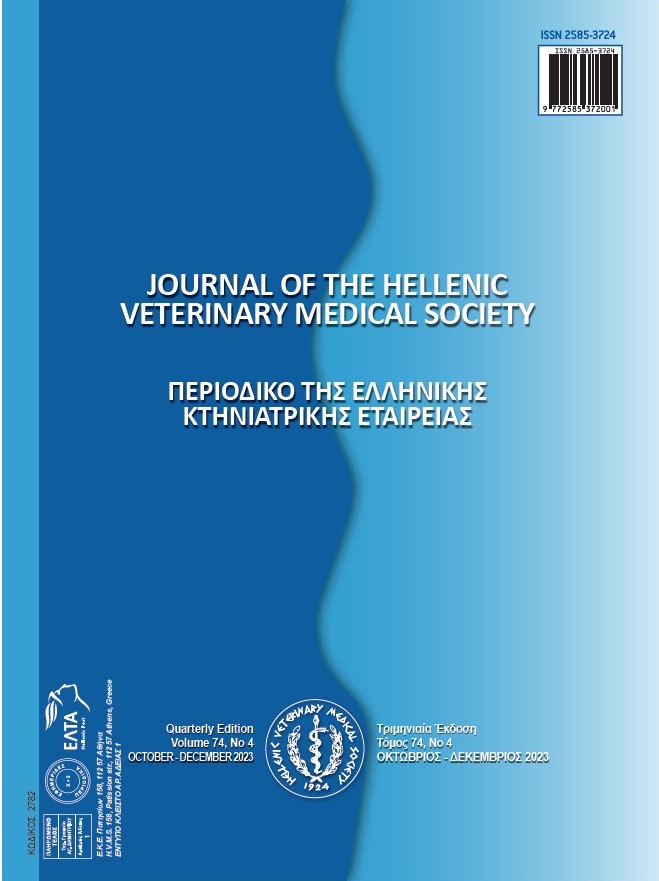Prognostic factors associated with femoral head and neck excision outcomes in 108 dogs. A retrospective study
Abstract
Femoral head and neck excision (FHNE) is a simple and non-reversible surgical procedure in which the entire femoral head and part of the femoral neck are removed obliquely. This allows the formation of a functional pseudarthrosis providing pain relief for dogs suffering from severe hip-joint disease. However, the factors affecting surgery’s outcome are controversial.
This study included 108 client-owned dogs. Every dog underwent a physical, orthopaedic, and radiological examination. Postoperatively, each dog owner answered a dog-mobility questionnaire. The association between quantitative variables and parameters was examined by statistical analysis.
The results show that the final weight-bearing time of the limb is negatively affected by the chronicity of the disease, while age and body weight do not affect it. No positive correlation was found in regard to the limitation of activity, administration of analgesia, and performance of physical therapy.
A dog’s age and body weight, postoperative activity restriction, physical therapy, and the administration of analgesics do not affect the outcome of FHNE. The disease’s chronicity and, consequently, muscle atrophy negatively affect the progress after surgery.
Article Details
- Come citare
-
Krystalli, A., Sideri, A., Kazakos, G., Papaefthymiou, S., Savvas, I., Anatolitou, A., & Prassinos, N. (2025). Prognostic factors associated with femoral head and neck excision outcomes in 108 dogs. A retrospective study. Journal of the Hellenic Veterinary Medical Society, 76(3), 9851–9862. https://doi.org/10.12681/jhvms.40194
- Fascicolo
- V. 76 N. 3 (2025)
- Sezione
- Case Report

Questo lavoro è fornito con la licenza Creative Commons Attribuzione - Non commerciale 4.0 Internazionale.
Authors who publish with this journal agree to the following terms:
· Authors retain copyright and grant the journal right of first publication with the work simultaneously licensed under a Creative Commons Attribution Non-Commercial License that allows others to share the work with an acknowledgement of the work's authorship and initial publication in this journal.
· Authors are able to enter into separate, additional contractual arrangements for the non-exclusive distribution of the journal's published version of the work (e.g. post it to an institutional repository or publish it in a book), with an acknowledgement of its initial publication in this journal.
· Authors are permitted and encouraged to post their work online (preferably in institutional repositories or on their website) prior to and during the submission process, as it can lead to productive exchanges, as well as earlier and greater citation of published work.





